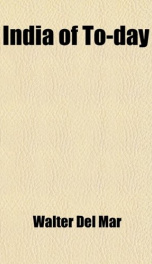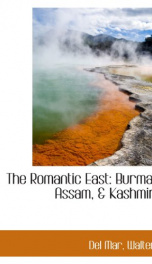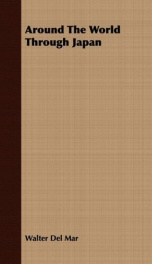india of to day

Purchase of this book includes free trial access to www.million-books.com where you can read more than a million books for free. This is an OCR edition with typos. Excerpt from book: CHAPTER III ELLORA AND AURANGABAD MunmarThe tongaDaulatabadThe Carpenter's Chapel Do Thai and Tin ThaiThe KailasaA temple in one pieceJain cave templesThe tomb of the Conqueror of the WorldDaulatabad FortAurangabad. The excursion from Bombay to the rock-cut temples of Ellora and back, including a visit to Daulatabad Fort and to Aurangabad, can be done in three nights and two days; but it is better to allow another twenty-four hours and spend a full day in examining the Ellora temples. For it is there that you can see, side by side carved in the living rock, the architectural ideals of the Buddhists, Brahmins, and Jains, spread in succession over a period extending from perhaps as early as the fourth century to probably as late as the twelfth century, the series being particularly rich in specimens of the art of the seventh and eighth centuries. As there are no sleeping accommodations at Daulatabad station, and as no food is to be had there unless you order it in advance through the guard of the train, you should arrive by the morning train ; and in order to catch this, you must leave Bombay by the 9 P.m. Calcutta mail, arriving at Munmar (Munmad) Junction, 162 miles from Bombay, about 3 A.m. In the first-class waiting-room there are three benches, each one roomy enough to spread your bedding upon so that you can sleep until your chhota hazri is served before taking the morning train for Daulatabad by the " Hyderabad-Godavery Valley" metre-gauge line, opened in 190x3. If you wish to see Ellora that day you must bring your own tiffin and have it on the train, which is due about 1 P.m. at Daulatabad. You should have previously written to Nusserwanji, the livery-stable keeper at Aurangabad, to have a tonga meet the train. The vehicle most generally used by ...
Info about the book
Author:
Series:
Unknown
ISBN:
8432240052
Rating:
4.5/5 (3)Your rating:
0/5
Languge:
English
Users who have this book
Users who want this book
What readers are saying
What do you think? Write your own comment on this book!
write a commentGenre
if you like india of to day try:
Other books by this author
Do you want to exchange books? It’s EASY!
Get registered and find other users who want to give their favourite books to good hands!




